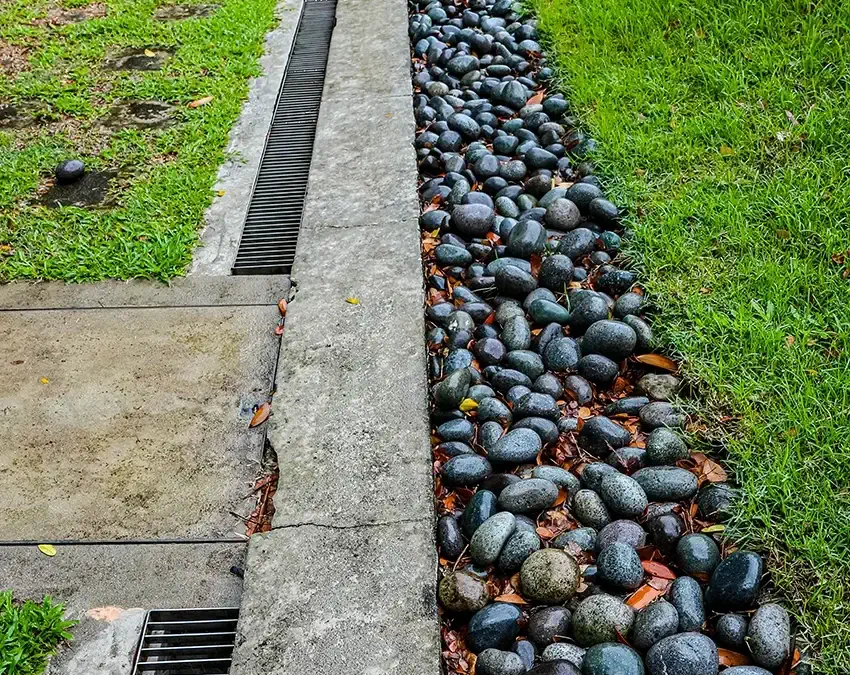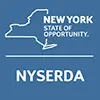Managing stormwater and preventing water damage is essential in urban and suburban environments like Long Island, Brooklyn, Queens, and the Bronx. With changing weather patterns and dense development, investing in an effective drainage system is more important than ever.
At Zavza Seal LLC, we get asked a lot about the best options for handling water buildup around homes and buildings. So, in this guide, we’ll break down the 5 types of drainage systems—explaining how they work, where they’re best used, and what type of environment they suit.
What Is a Drainage System?
A drainage system is a network designed to move excess water away from buildings, driveways, and low-lying areas to prevent flooding, soil erosion, and foundation damage.
Drainage systems come in different forms—each serving a different function depending on your location’s soil type, landscape, and climate conditions.
Why Drainage Systems Matter in NYC Boroughs
New York City boroughs and surrounding areas all experience high population density, frequent rainfall, and heavy surface runoff due to concrete, asphalt, and compacted soil.
That makes proper drainage—not a luxury, but a necessity.
Whether you’re in:
- Queens, where flooding can impact basements,
- Brooklyn, with tight row-house spacing and minimal green space,
- The Bronx, with hilly terrain in places,
- or Long Island, which often has sandy soil but poor natural drainage—
you need the right solution tailored to your environment.
The 5 Types of Drainage Systems
Here’s a closer look at the 5 types of drainage systems used in residential and commercial properties—along with insights on where each system is best suited:
1. Surface Drainage System
A surface drainage system is the most visible and commonly used method. It involves shallow ditches, swales, or grates that guide rainwater across the ground to a discharge point.
Key Features:
- Includes gutters, open drains, stormwater grates
- Best for properties with noticeable slope or pooling areas
- Helps prevent water from soaking the foundation
Ideal for:
- Queens and Brooklyn, where water runoff from concrete surfaces is high
- Properties with moderate to heavy rainfall
- Areas with clay or compacted soils that resist absorption
2. Subsurface Drainage System (French Drains)
Also known as French drains, this system is installed below ground and collects water from the soil before it reaches the surface. It uses perforated pipes surrounded by gravel to direct water away from structures.
Key Features:
- Hidden underground, so it doesn’t affect landscaping
- Reduces hydrostatic pressure around foundations
- Prevents basement flooding and soil erosion
Ideal for:
- Long Island, especially areas with sandy or loamy soil
- Queens, where older homes are prone to basement seepage
- The Bronx, where sloped land needs underground water diversion
3. Slope Drainage System
Slope drainage systems guide water down a slope using gravity, usually via pipes installed at an incline. These are critical for preventing runoff accumulation on elevated properties.
Key Features:
- Relies on natural or engineered slopes
- Can include downspouts and piping along the grade
- Protects hillsides and landscaped slopes
Ideal for:
- The Bronx, due to its elevated areas like Riverdale and parts of East Bronx
- Properties with uneven terrain or elevated gardens
- Areas with rocky or shallow soil layers
4. Downspout and Gutter System
Your home’s first line of defense. Gutters and downspouts collect rainwater from the roof and guide it away from the foundation—usually into storm drains or a dry well.
Key Features:
- Easy to install and maintain
- Works best when paired with other drainage methods
- Directs roof runoff to safe discharge areas
Ideal for:
- All boroughs, particularly Brooklyn and Queens where properties are close together
- Homes with basements or crawl spaces
- Areas with frequent rainfall and flat terrain
5. Dry Well Drainage System
A dry well drainage system stores water underground temporarily and allows it to gradually seep into the soil. It’s especially useful in areas with limited space and poor surface drainage.
Key Features:
- Usually installed below a downspout or runoff point
- Minimizes water pooling in yards or around homes
- Reduces strain on municipal stormwater systems
Ideal for:
- Long Island, due to the sandy soil that absorbs water quickly
- Brooklyn homes with small yards and minimal space for open drains
- Queens, where properties need additional underground drainage
Drainage System Suitability Table
| Drainage System Type | Best Borough(s) | Soil Type | Environment |
|---|---|---|---|
| Surface Drainage System | Queens, Brooklyn | Clay, compacted soils | Urban areas with flat surfaces and poor runoff |
| Subsurface (French Drain) | Long Island, Queens | Sandy, loamy soils | Homes with basement flooding or water seepage |
| Slope Drainage System | The Bronx | Rocky, shallow soils | Properties on elevated land or hills |
| Downspout & Gutter System | All boroughs | All soil types | First line of defense for rooftops and water redirection |
| Dry Well Drainage System | Long Island, Queens, Brooklyn | Sandy or mixed soils | Areas with space constraints & poor runoff |
Choosing the Right System for Your Property
Selecting the ideal types of drainage systems depends on factors like:
- Soil composition
- Topography
- Rainfall patterns
- Available space
- Building design
That’s why a one-size-fits-all solution doesn’t work in diverse areas like NYC. Zavza Seal LLC specializes in custom drainage planning tailored to your borough, block, and backyard.
Why Trust Zavza Seal LLC?
We’re more than just waterproofing professionals—we’re your local partners in protecting your property against flooding, erosion, and water damage. With years of experience serving Long Island, Queens, Brooklyn, and the Bronx, we know what works where—and why.
Our Services Include:
- Site inspection and soil evaluation
- Drainage system design and installation
- Foundation waterproofing
- Dry well and French drain installations
- Seasonal maintenance and repairs
Final Thoughts
Understanding the types of well drainage systems available can help you make an informed decision when protecting your home or commercial property. From surface drainage systems to dry wells, each option has its advantages—and knowing which suits your borough and soil type can save you thousands in future repairs.
Don’t wait until the next storm hits.
📞 Contact Zavza Seal LLC today for a free consultation and protect your property with the right drainage system for your location.
FAQs
- What is the best drainage system for homes in Long Island?
The best drainage system for Long Island homes is often a dry well or French drain, due to the area’s sandy soil which allows for easy water absorption and groundwater recharge. - Do I need a surface drainage system in Brooklyn if my yard floods during heavy rain?
Yes. Brooklyn’s dense urban layout and minimal green space make surface drainage systems crucial to redirect water quickly and prevent flooding or pooling near foundations. - What type of drainage system works best for Queens properties with basements?
Homes in Queens with basements benefit from subsurface drainage systems like French drains, which reduce hydrostatic pressure and prevent basement water seepage. - Are dry wells effective in the Bronx?
Dry wells can be effective in certain Bronx locations, but areas with clay-heavy or rocky soils may require slope drainage systems or combination drainage solutions for better performance. - How do I know what drainage system is right for my property?
You need a professional site evaluation that looks at soil type, slope, water table, and your property layout. Zavza Seal LLC offers free consultations in Long Island, Brooklyn, Queens, and the Bronx. - Are there different types of drainage systems for commercial vs. residential properties?
Yes. While the core types (surface, subsurface, slope, dry well, gutter) are the same, commercial properties may require larger-scale systems and more complex layouts to handle high-volume runoff. - How much does a well drainage system cost in NYC boroughs?
The cost depends on the system type and property size. In general:
- Surface drainage: $2,000–$6,000
- French drains: $3,000–$10,000
- Dry wells: $1,500–$4,000
Prices vary in Queens, Brooklyn, the Bronx, and Long Island based on permits and labor.
- Do I need permits to install a drainage system in Queens or Brooklyn?
Yes, in many cases, especially if the system connects to the municipal sewer. Zavza Seal can handle local permitting requirements as part of your installation. - Can I combine a French drain with a dry well?
Absolutely! In fact, combining a French drain with a dry well is common—water is collected underground and then dispersed slowly via the dry well for maximum effectiveness. - How can I prevent basement flooding in Long Island and the Bronx?
Install a subsurface drainage system (French drain), add gutters and downspouts, and consider a dry well to handle overflow. Foundation waterproofing is also recommended in flood-prone areas.








